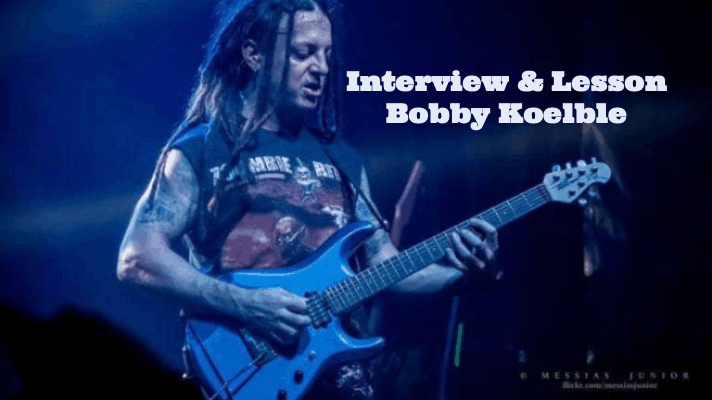I want to start this article by saying, I’m just a big fan of Guitarist Bobby Koelble. He’s the type of Guitarist I want to be like “when I grow up”.
I like to think of myself as a busy musician. I’m writing, teaching and performing 4-6 days a week, 52 weeks a year. But… theres busy… and there’s Bobby Koelble busy.
I like to think I’m fairly versatile on the guitar. I’ve done my share of Rock, Metal, Funk, Acoustic.. even some solo Classical gigs over the years. But…There’s versatile.. and there’s Bobby Koelble versatile.
I first met Bobby I think around 2004 at The Social in downtown Orlando. His band Junkie Rush was performing a crazy mix of Funk, Latin, ska, punk.. I’m not sure what it was but I remember thinking, Wow.. that guy is really good.
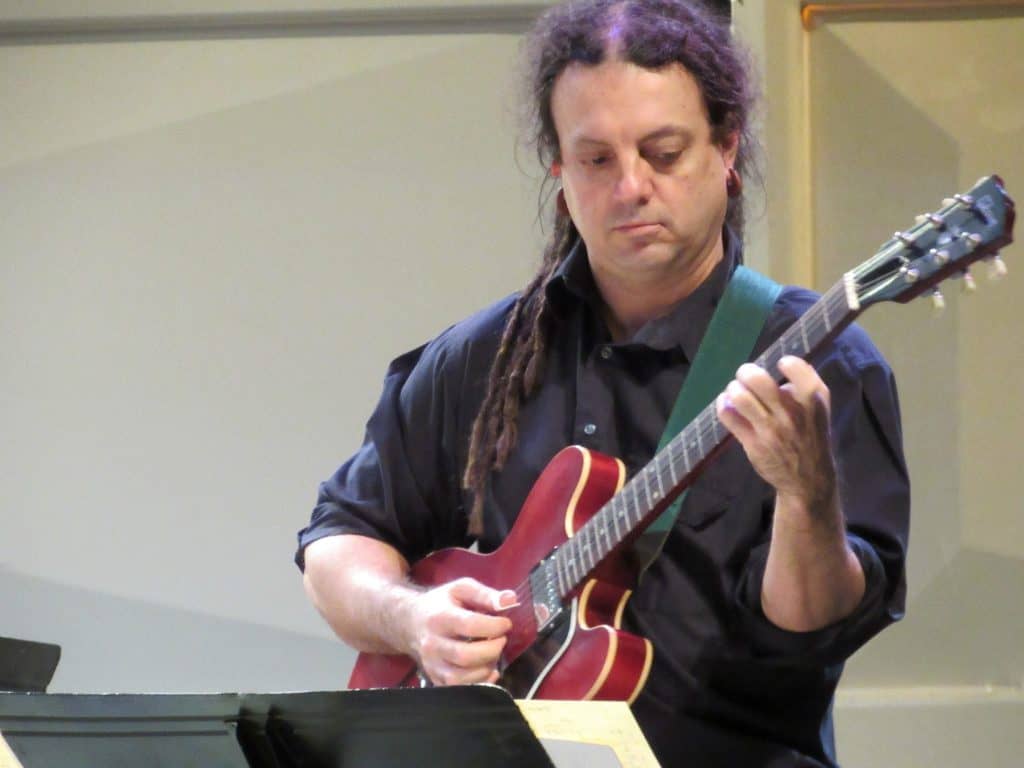
About a year later I was working on music for a big Christmas show at the Gaylord Palms Resort and Convention Center. The musical director had supplied me with some music and backing tracks for the show that included some crazy fast, clean technical lines that I had about a week to learn before opening night.
Think Yngwie mixed with Trans Siberian Orchestra. I remember sitting in the studio asking.. who the hell played on this track? the playing was phenomenal. “Oh, that was Bobby Koelble”.
My second question was.. “Why are you hiring me for this gig? Just get THIS guy to do it”. Well.. hes too busy. Bobby Koelble is too busy.
Of course he is!
I’m kinda glad he was too busy because I ended up doing that gig for 11 years. (Thanks dude)
… and thats pretty much how my interactions would go with Bobby over the next 10-15 years.
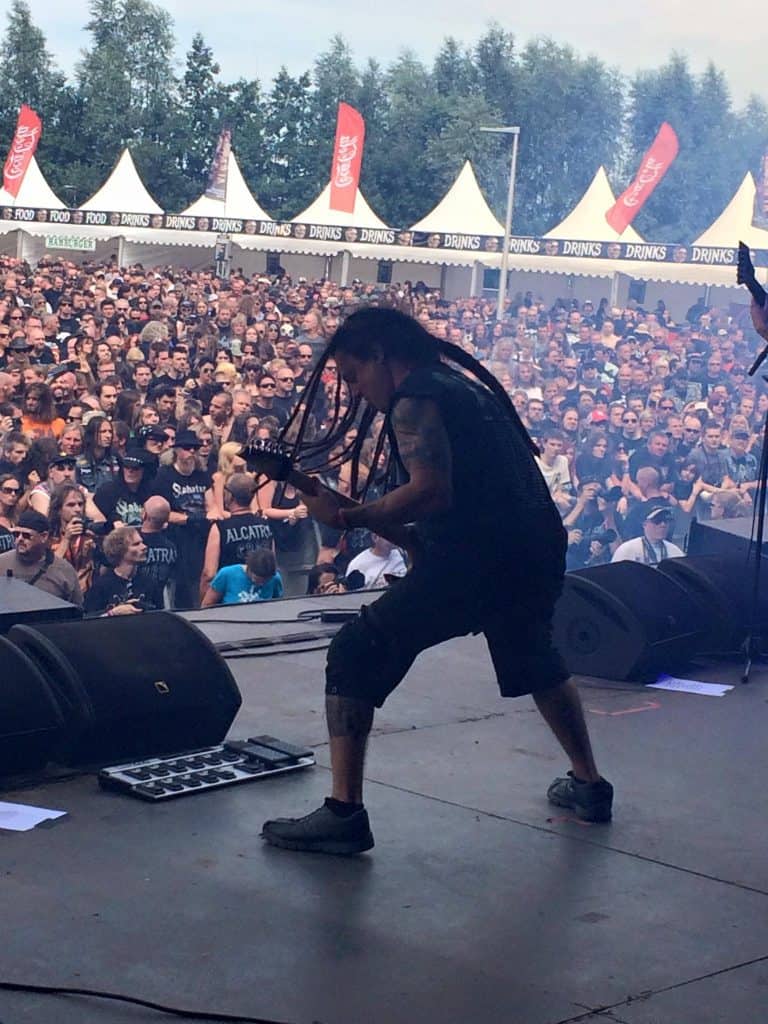
Bobby Koelble is the type of guitarist we all strive to be like. Growing up a typical Rock/Metal player in Central Florida, he did the Berklee thing where he got into Jazz and Classical music.
In 1994 he joined Chuck Schuldiner in his legendary band ‘Death’ recording arguably their most sophisticated and (my favorite) album ‘Symbolic’ in 1995.
Over the years Bobby has played with just about everyone including legends like Sam Rivers and Dixie Dregs bassist Dave LaRue.
He currently teaches Jazz Studies at Rollins College and The University of Central Florida along with leading a slew of bands and side projects. Did I mention hes busy?
Whether its straight Jazz, solo Classical or full-on Metal Bobby Koelble is always delivering the goods and as a guitar player.. just a joy to watch.
A while back I tried to get Bobby in on my Guitar Practice Routine roundup interview.. of course he was too busy to make that deadline (ha), so I’m going to try again and this time see if I can get some lessons, advice and insight into what makes this monster musician tick… and of course give him his own well deserved article.
The Bobby Koelble Interview
Craig @ Lifein12Keys:
Man.. I think I’m busy playing 4-5 gigs a week with only 1 or 2 different groups. I watch all of your videos and follow all your stuff.. It seems like your playing 8 days a week in so many different acts… and you maintain a busy teaching schedule. How do you do it?
Bobby Koelble:
“Lots of coffee haha. I’m just thankful that people reach out to me and want me to come play with them. I try to return the favor. I try to keep a full calendar while people still want to hear me haha. But it ebbs and flows. Things slow down in the summertime, as I’m sure you’ve experienced, but I welcome that to an extent. It gives me time to recharge a bit and further pursue some more creative endeavors.”
Craig:
It seems like you have a new Jazz or Fusion project for those Blue Bamboo Center For the Arts shows all the time. How much time and prep goes into each new show? What’s the preparation and process like for you?
Bobby:
“I like to try out conceptual things at the Bamboo, but I can’t always do so because of the magnitude of some of the ideas. There are some things that I’d like to try out, but you can’t really rock out too hard there. There’s a limit as to how loud an obnoxious you can be at that venue haha.”
“I’ve done some tribute shows (Pat Metheny, Billie Holiday etc.) which, aside from shedding the material, didn’t take a whole lot of extraneous preparation. But others have been more perplexing and time-consuming. The Miles Davis meets Jimi Hendrix show was particularly fun.”
“The most preparation by far went into my Los Hombres de Led Zeppelin show, a ten-piece Latin jazz band performing the music of, well, Led Zeppelin haha (that group will be performing two shows at the Blue Bamboo in Winter Park on Friday May 24). Those type of things I can’t pull off every month. But then again, sometimes it’s nice to just go play and not worry about so much logistical stuff.”
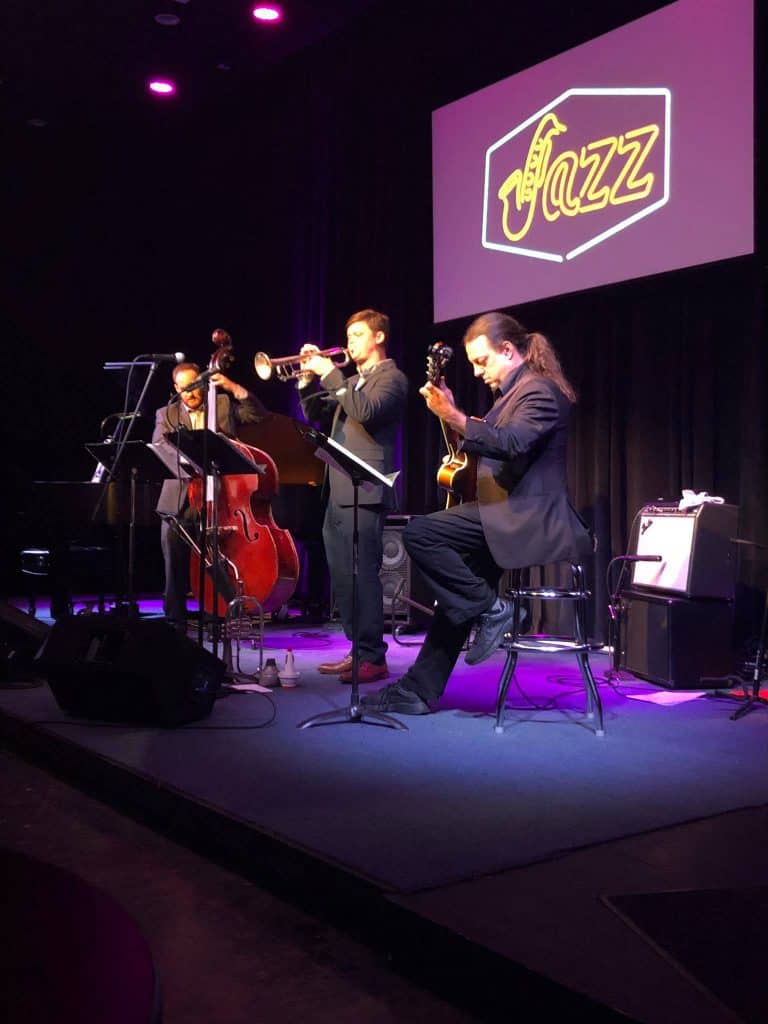
Craig:
I always love your solo Classical videos. As someone who has studied Classical Guitar and knows how much work it takes to add new repertoire.. what’s your process for learning a new piece?
Bobby:
“Man, it’s honestly been a couple of years since I’ve added anything new to my classical guitar repertoire. I always aspire to do so, but as you know, there’s a degree of available time and commitment if you want to do it right. I usually start out by attempting to read through the piece, just to get a broad idea of what I’m up against haha. Then, I try my best to just be patient and work on one phrase at at time.”
“Sometimes, that means just one measure or even less. Playing classical guitar is like a choreographed interaction between your two hands (and your mind and entire body, of course), and you have to work out these interactions to the point where you almost can’t mess them up.”
“I still do, though haha. I also try to spend time on the individual parts. I’ll sing the bass lines, play them independently from the upward stems, which I’ll also attempt to sing. I try to work out the technical difficulties first, then work on making it sound like an emotive human being is playing it.”
Craig:
What are some of your favorite classical pieces whether in your current repertoire or not?
Bobby:
“Some of my favorites that I can actually play are Recuerdos de la Alhambra by Francisco Tarrega, Variations on a Theme of Mozart by Fernando Sor and some various things by Bach. (All of these scores available in the free members area, links below)
- Recuerdos De la Alhambra – Tarrega PDF
- Variations on a Theme of Mozart – Sor PDF
- La Catedral – Barrios PDF
“As you know, these things take maintenance, and if I go too long without playing them it’s painfully obvious haha. I’m embarrassed to say this, but I don’t have anything by Barrios up and running in my repertoire. I consider him to be the finest composer for the classical guitar. I almost had La Catedral together, but it slipped through my fingers, literally haha.”
Craig:
That’s funny.. I agree. I think Barrios is the greatest pure guitar composer ever. I’ve had La Catedral almost up to performance level several times before blowing it and getting busy with something else… ha. Heres an excerpt for readers of the main arpeggio sequence:
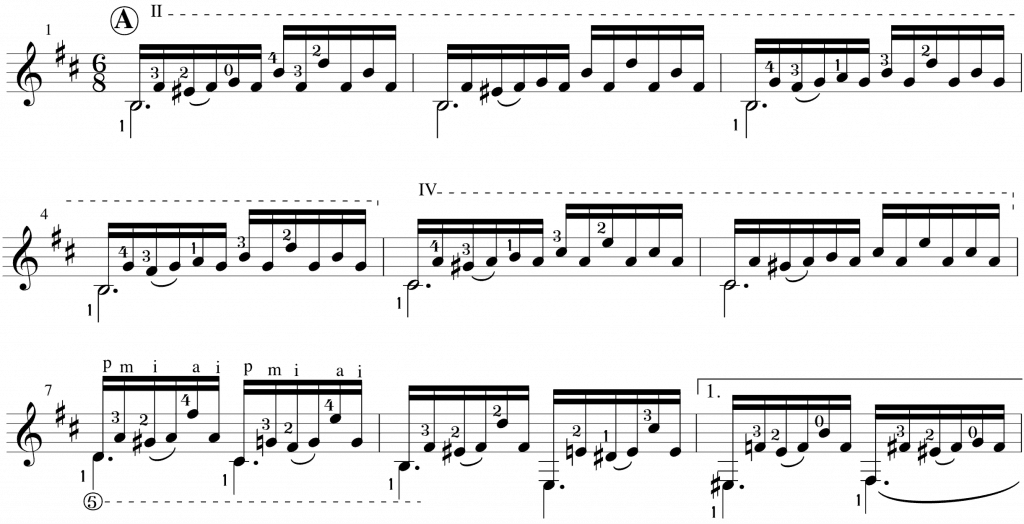
“Maybe this interview will make me get off my ass and learn it for real. All of his great masterpieces are among my favorites. Una Limsona por el Amor de Dios, Un Sueno en la Floresta…he wrote so much amazing music. When I see people perform his pieces, I always think, “Damn, that looks hard” haha. Some of it presents daunting challenges, especially from a left hand perspective.”
Craig:
What got you into Jazz? Who was your “gateway drug”… I know for me it was DiMeola, Coltrane and Miles.
Bobby:
“Well, for me it was Al Di Meola. I remember hearing “Mediterranean Sundance” on a mixtape and freaking out over it. For a while, I didn’t know who it was, but eventually found out it was Al and Paco. So I hunted down the Elegant Gypsy album, and it was the first time I had heard anything even close to jazz that I was aware of. I dove into his early discography pretty hard, and eventually found out that he went to this place called Berklee College of Music, which immediately sounded like a place that I needed to be.”
“When I got there, I still hadn’t consciously heard bebop or anything you would call “real jazz”. When I did, my initial reactions were, “This sounds old”. “Where’s the guitar?” haha. Obviously, I hadn’t heard Wes Montgomery or George Benson or anyone like that yet. But once you start to learn some of the language and understand the communication between the musicians, and then learn about the lives of these great men and women who made that music, you can develop a lifelong curiosity and almost a fanaticism with it. At least that’s what happened with me.”
Craig:
I like to do a lot of lessons and things on the website. Would you mind giving me a crash course on how you approach ii, V, I’s?
Bobby:
“Well, you’re basically creating melody (or harmonized melody) over the three most prominent harmonic devices in a given key, or the “key of the moment” if the ii V I happens to be in a different key center than the general key that the tune is in.”
“You can approach it in different ways. A lot of the bebop guys, Charlie Parker for instance, would usually just play the V chord and resolve it gracefully into the I. The great pianist/educator Barry Harris has taught extensively on this process using certain 8-note “bebop” scales like the 6th diminished scale, dominant bebop scale and so on. ”
What is a ii, V, I progression?
If you’re new to basic harmony, a “ii, V, I” is probably exactly what you think it is. We can take any Major Scale or Key, in this case C Major and build chords on each scale tone:

- C Major 7
- D minor 7
- Em7
- FMaj7
- G7
- Am7
- Bm7b5
Creating a chord progression using the 2nd, 5th and 1st chords respectively, gives you a “ii, V, I”. You can grab a Jazz fake book and find 2/5/1’s everywhere.
If you’re not sure how to find the notes in a scale or how to build diatonic chords in a key, check out this lesson on scales and basic harmony for beginners. If you want to get going with useable chord shapes right away, check out this Jazz Chord Study Guide for Beginners.
Dominant Bebop Scale
Before I even knew what a Bebop scale was.. I was doing it. Chances are you might be too. When approaching the V chord, we’re simply adding in a diatonic 7th to a Mixolydian scale.
Take a G Mixolydian scale (the 5th mode of C Major)
G A B C D E F G >> add in the Major 7th (F#)
G A B C D E F F# G >> Dominant Bebop Scale!
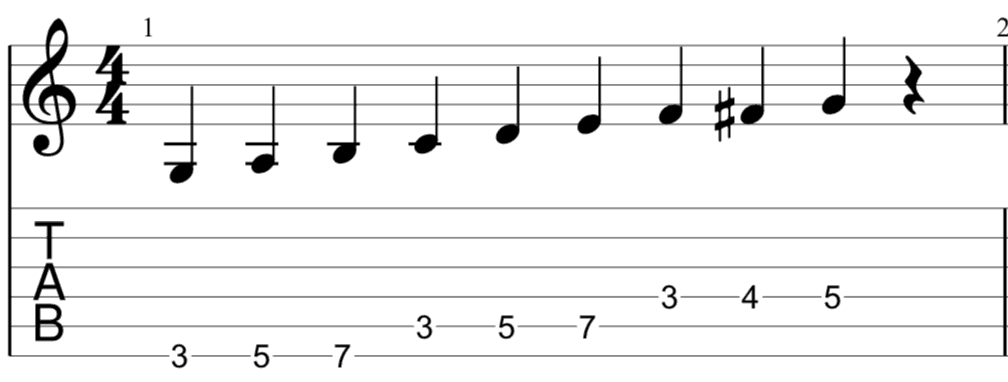
Bobby:
“Pat Martino uses something he calls Minor Conversion, by which he uses the ii chord, and the associated Dorian mode, to navigate the entire progression. Both approaches work, because they generally incorporate a lot of the same notes/chord tones, but I find that they yield different sonic results.”
ii chord minor conversion in C Major
- C Major 7
- D minor 7 – Dorian mode – (DEFGABCD)
- Em7
- FMaj7
- G7
- Am7
- Bm7b5
“Transcribing is very important in this process, because a lot of the melodic information that the great players use incorporates all twelve notes of the chromatic scale, not just the seven or eight you find in more conventional scales. It really is a language that you learn to speak by imitating it, just like you imitated your parents when you learned to speak verbally.”
“When you analyze the solos of these great players, it essentially comes down to playing strong notes on strong beats. In other words, emphasizing the notes in the chord of the moment (specifically the 3rd and 7th) on the strongest beats of the measure, which harmonically speaking are beats one and three.”
“You can get to and from these chord tones in a variety of interesting ways, which the great improvisers have provided a vast variety of examples to choose from.”
Craig:
My acoustic duo does a few Jazz tunes. What are some ideas I can integrate into my improvisations (outside of the basic key center) to make my caveman rock licks sound a bit more jazzy?
(Using Dm9, G13 to CMaj9 as an example?)
Bobby:
“Well, you can really go down the wormhole of chord substitutions and come up with a variety or approaches. Dave Liebman extensively covers many of them in his book “A Chromatic Approach To Jazz Harmony And Melody”. That book will have your head spinning by page 30 haha.”
“It all starts with the good ol’ tritone substitution, where you substitute the V chord with the dominant seventh chord a tritone away (in this case, Db7). You could then attach the “related ii” to that chord (the ii chord that you would normally associate it with), which would give you Abm7 to Db7. In other words, your substituting the original ii V with the one that’s a tritone away, taking care to still resolve smoothly to the original I chord.”
“It may sound weird at first, but as long as you keep the line moving and resolve it, it should still work. The end justifies the means, so to speak haha.”
Tritone Substitution
One of the most common moves in Jazz, it sounds confusing but really isn’t when we break it down.
Don’t confuse a “Tritone” with a 3rd or Diatonic 3rd. We’re actually moving up 3 complete whole tones from the root of our dominant 7 chord. In this case using G7 (G13) as our example.
- G – Root
- A – 1 Whole Tone away.
- B – 2nd Whole Tone away.
- Db – Tritone
The Tritone Substitution in this case would be Db7 for the original G7.
As Bobby said “attaching the related ii chord” – Ab minor 7.
This could be Ab dorian, Abm7 arpeggios etc., al.
How does Bobby get Abm7 as the related ii chord?
- Tritone Substitution: Db7 for G7. Remember Db is 3 whole tones higher than G.
- Db7 is the V chord in the key of Gb
- The ii chord in Gb is Abm7
Bobby:
“One of the most general and useful is the “minor 3rd” substitution, whereas you would play the ii and V up a minor 3rd from the original key (in this case, you would play Fm7 to Bb7) and then resolve to Cmaj9 as planned. Again, if you keep the line moving and resolve it properly, you should come out unscathed.”
“Another cool trick involving pentatonics is to play A- pentatonic over ii, then move up in half steps over the V and I (Bb- pentatonic over G7 and B- pentatonic over Cmaj7). I’ve heard this attributed to David Baker, the great educator who taught at the University of Indiana for many years. I find it works better if you play the pentatonic scales a little more intervalically, as opposed to just playing your favorite blues licks haha.”
Craig:
So, I’m 48 and I think you just turned 50? I don’t know about you, but literally everything hurts these days! What are some things you do in your daily practice routine to keep your chops (and hands) in shape? Do you do a technical guitar routine or is it mostly working on new music?
Bobby:
“Yeah, I hit the big 5-0 last year. I don’t really feel it until I look in the mirror haha. I don’t have any type of set practice regimen, but I do try to do make sure that I do fundamental things on a regular basis. A lot of that concerns doing certain things with scales: intervallic patterns, triads and 7th chord arpeggios that move both vertically and horizontally on the fretboard using the scales that I most often use.”
“This usually means major, melodic minor, harmonic minor, harmonic major and all of their associated modes, plus diminished, whole tone, augmented, and various pentatonic scales as well. Some days I’ll pick one key to work in, other days I’ll attempt to run the circle of 5ths. ”
“I also have some things I work with on the classical guitar that deal with the left and right hands individually, as well as both hands together, and also tremolo. I don’t always get to all of that every single day, but I like to keep it all in my general periphery.”
Craig:
We always have gigs on the same days,, so of course i miss everything unless its on the internet.. Tell me about The Absinthe Trio. All of the videos I’ve seen are just fantastic.
Bobby:
“Thanks a lot, man. The Absinthe Trio started at the beginning of 2008. My wife Wendy started managing a venue in downtown Orlando called the Absinthe Bar and Bistro, so I put together a trio to play there every Wednesday, and we eventually became known as the Absinthe Trio. ”
“After the venue closed, we went on to do weekly shows around Orlando for several years, and still perform on occasion (our next show is at the Orlando Fringe festival on Saturday May 25). In the beginning, we also featured a female vocalist (our drummer Rion Smith’s wife Yuki), but that ended once she gave birth to their son.”
“So these days, the group is essentially a combination of original compositions, classic jazz/fusion standards, and classic rock covers played our way and sung by me. We’ve always incorporated elements of electronic music, using loops and samples as well as my Roland guitar synth, and I’ve recently forayed into the realm of Ableton Live, which we’ve begun to work into our live shows. It’s amazing software and great fun to work with, and I’ve only just begun to scratch the surface of what it’s capable of.”
Craig:
How has becoming a father impacted your music lifestyle… I mean it doesn’t seem like you’ve missed a beat! I have 4 chihuahuas.. I cant imagine a little human running around too!
Bobby:
“Haha we actually had four dogs at the time our daughter was born, but we eventually lost all of them to old age. But yes, it has absolutely impacted my musical lifestyle. There is definitely a shift in priorities to say the least. Whereas in the past, I would spend most of my spare time with a guitar in my hand, a lot of that time these days is spent with my daughter. ”
“I’m not begrudging that fact, though. I waited till I was 43 to have a child, so I definitely had plenty of time to be selfish and do my own thing. I just want to make sure that I spend the time and be a good dad and help to raise a quality human that will have a positive impact on the world. But I still sneak off to practice at every given opportunity haha. That usually means at night after she’s gone to sleep.”
Craig:
What was the Death To All tour like for you? How did it feel getting back into that music again after all these years?
Bobby:
“Those tours were fantastic. Gene, Steve and Max are some of my favorite people on the planet, and it was great to perform that material again that means so much to so many people, including ourselves of course. Hopefully we’ll do it again at some point, if not as extensively as we’ve done so in the past.”
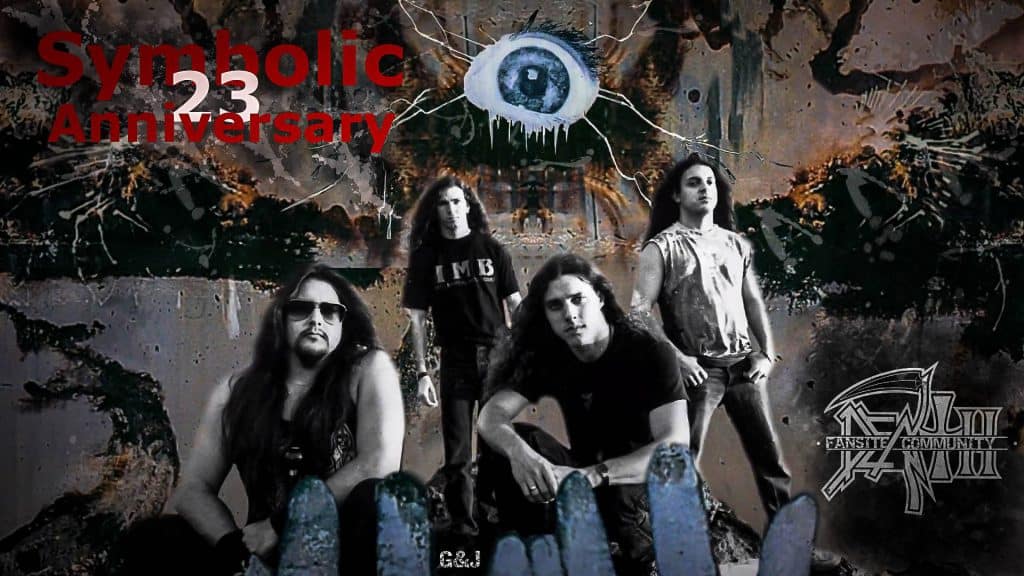
“I never completely lost touch with heavy metal after Death initially disbanded. I just got involved in so many other things that it was substantially on the back burner for many years. I don’t think a love for heavy metal ever leaves you, especially if it was a vital part of your formative years, which I’m sure it was for you as well. But my involvement in the metal scene definitely flared up again after the DTA tours started.”
“I’ve since done several guest solos for various bands, and I’m currently tracking guitars for Gone In April’s new album, which should be out in the fall. I also have a long-distance metal project called Lie Of Eris, involving two of my friends from Quebec City as well as Chuck “Mandaddy” Ellis from Gargamel! on vocals. We recorded an album in our spare time over the course of five years, and it’s finally going to see the light of day, hopefully this summer.”
Craig:
Anything else you’d like to promote.. gig calendar, etc..?
Bobby:
“I currently don’t have my own website, but I can be found and followed/subscribed to on Facebook, YouTube and Instagram. I perform the first Wednesday of every month (except June) at the Blue Bamboo Center for the Arts in Winter Park FL. I also perform a monthly jazz guitar duet at the Bamboo with it’s owner, Chris Cortez. Aside from that, here’s what I have coming up in the immediate future:”
Friday May 17 w/Dave LaRue @ Shovelhead (Longwood FL)
Friday May 24 w/Los Hombres de Led Zeppelin @ Blue Bamboo
Center For the Arts (Winter Park FL)
Saturday May 25 w/The Absinthe Trio @ Orlando Fringe Festival
Saturday June 5 w/Scott Dickinson (trumpet) @ Pilar’s (Winter
Garden, FL)
Wednesday June 5 w/Chris Cortez @ Blue Bamboo
Wednesday June 12 w/Scott Dickinson @ Blue Bamboo
Craig Smith is a professional Guitarist, Teacher, and Writer living in Sanford, Florida. Craig has taught guitar lessons, performed 200+ gigs per year for nearly 30 years, and published 4 guitar instructional books. When he’s not gigging or writing, you may find him by the pool with his wife Celeste, 4 Chihuahuas, and a drink. 🎸

